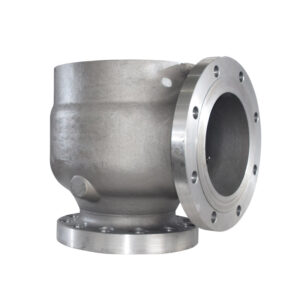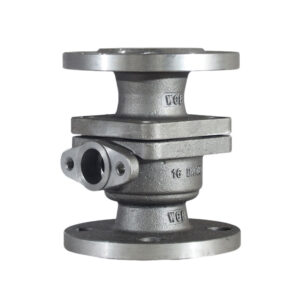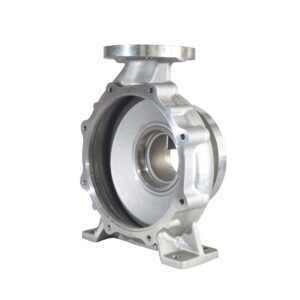Drain Valve Assembly
Drain Valve Assembly
The Drain Valve Assembly is a precision-engineered valve part for civil use, designed for efficient fluid control in residential and commercial systems. Built for durability and reliability, the Drain Valve Assembly ensures optimal performance in everyday applications. Trusted by professionals and homeowners alike, it’s the ideal choice for seamless drainage solutions.
The Drain Valve Assembly is a precision-engineered valve part for civil use, designed for efficient fluid control in residential and commercial systems. Built for durability and reliability, the Drain Valve Assembly ensures optimal performance in everyday applications. Trusted by professionals and homeowners alike, it’s the ideal choice for seamless drainage solutions.
The Drain valve assembly is a precision-engineered fluid control component designed for both residential and light commercial plumbing systems. Manufactured with high-grade materials and tight machining tolerances, this assembly provides reliable, leak-free drainage performance in a wide range of civil applications—from household water discharge systems to HVAC condensate lines and utility plumbing frameworks.
Engineered for long-term durability and corrosion resistance, it is built to withstand constant exposure to varying water qualities and pressure cycles. Its streamlined internal design allows for efficient flow regulation and minimizes residue buildup, ensuring consistent operation and low maintenance requirements.
Installation is straightforward thanks to its standardized dimensions and universal compatibility with most piping systems. Whether you are a professional plumber handling complex system retrofits or a homeowner managing routine maintenance, the Drain valve assembly delivers the performance and dependability you need for hassle-free operation.
Each Drain valve assembly undergoes rigorous quality testing and is backed by strict material traceability and manufacturing protocols, ensuring it meets or exceeds industry standards. Trusted by technicians, engineers, and DIY users alike, it stands as a versatile and essential component for modern drainage infrastructure.
- More than 60 kinds of materials, more than a dozen alloys, and 70 kinds of numbers.
- Many products can be produced, 3500+ precision casting molds, 1000+ sand casting molds.
- The production accessories can be large or small.
- A single product of 50 kg can be customized.
- Multiple furnaces are available for selection, and single pieces of 50 kg to 850 kg can be produced.
- 20 years of master, rich experience, entered the industry in the 1980s, the industry leader.
- Products are traceable, and each furnace product has a certificate: 3.1 Material Certificate.
- Customers can ask a third-party testing agency to issue a 3.2 certificate.
- Processing fine products can be issued with a processing certificate.
Leierwo’s advantages in casting precision castings in the valve casting industry
Leierwo has been deeply involved in the precision casting field for many years, particularly accumulating extensive experience in the manufacture of valve components. The company specializes in the production of precision castings made of carbon steel, alloy steel, and stainless steel—materials commonly used in the valve industry. By utilizing advanced technologies such as melt casting and silica sol processes, the company is able to achieve high-precision molding of complex structural parts, meeting the performance requirements of valves under high-temperature, high-pressure, and corrosion-resistant operating conditions. Furthermore, Leierwo emphasizes custom production based on customer drawings, enabling it to better match valve castings to specific customer needs, ensuring product sealing and structural stability.
Main material selection
Valve castings must withstand complex operating conditions such as pressure, temperature, and corrosion. Therefore, material selection should prioritize corrosion resistance, high-temperature strength, cavitation resistance, and good processability. Stainless steel is the preferred choice due to its excellent overall performance.
Common Materials:
Stainless Steel Series:
316/316L: The best choice, resistant to chloride ion corrosion, suitable for marine environments, chemical, and petroleum industries. 304/304L: An economical material suitable for general corrosive environments. 410: Martensitic stainless steel, with some corrosion resistance, suitable for high-temperature steam valves.
17-4PH: Precipitation-hardened stainless steel, with high strength and corrosion resistance, suitable for high-performance valves.
Carbon Steel Series:
WCB (carbon steel general material): Commonly used for general-purpose valves at room temperature.
4130: Suitable for high-temperature and high-pressure valve housings.
Specialty Alloy Series (for high-corrosion/high-temperature environments): 2205 duplex stainless steel: Excellent stress corrosion resistance, suitable for marine and chemical industries. Cobalt alloy (CoCr): such as Co6 and Co12, suitable for valve sealing surfaces with severe high temperature damage.
Key casting service options
Valves have stringent requirements for sealing and pressure resistance, and the choice of casting service directly impacts their functional reliability:
Investment casting: The preferred method for medium- and high-pressure valves. Components such as valve bodies and sealing seats often contain complex internal cavities (such as curved flow paths) and precise mating surfaces (e.g., sealing surface roughness must be ≤ Ra1.6µm). Investment casting can precisely replicate complex shapes, reduce casting defects (such as pores and shrinkage), and mitigate leakage risks. It is particularly suitable for high-pressure valves made of stainless steel and alloys.
Sand casting: Suitable for mass production of low-pressure, large-scale valves. For example, low-pressure gate valve bodies for municipal water supply have relatively simple shapes (mostly symmetrical structures), large production runs, and moderate precision requirements. Sand casting offers significant advantages in terms of low cost and high production capacity.
CNC machining: Focuses on critical mating areas. Valve flanges and stem shaft diameters must precisely align with the pipeline or actuator. After casting, CNC milling and grinding are performed to ensure flatness and perpendicularity tolerances of ≤0.02mm/m, ensuring a tight assembly.





